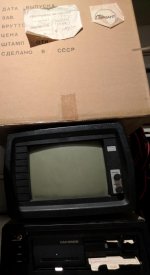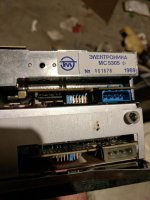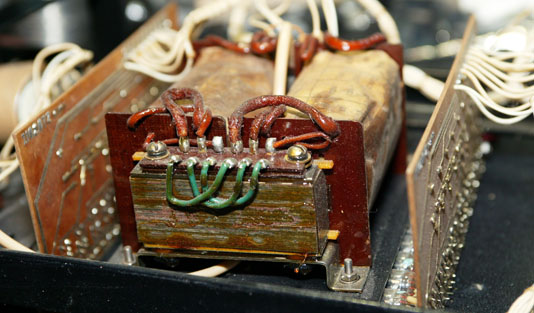mrcity
Experienced Member
Hello Comrades 
A while back, I contacted Mihail via the email address shared in this old "For Sale" post http://www.vcfed.org/forum/showthread.php?57786-Soviet-DVK-3-PCs-available . Anyway, I guess the closest domestic thing to it is the DEC PRO 325 & 350. After probably 2 months back and forth of figuring out if it works, how it works, what comes with it, what can I do with it, how much it all costs, and how to pack it so it doesn't get destroyed, I finally took the bait and got one. Its 150-lb crate arrived at the corner of my front yard last Tuesday, leaving me to haul it up nothing but hills with my hydraulic lift cart. :nervous:
Here are some pictures:

The huge crate

Original packing materials (even the styrofoam)

The computer

Physical documentation
I haven't had a chance to power it on (or even really rip it open yet), and am still thinking of the best way to get it the 220V (+22, -33) @ 50Hz it needs (or if it can live with 60Hz). It has a CEE 7 or GOST 7396 style plug on its power cable, and a separate input for ground. I was thinking of getting a 120VAC -> 12VDC converter, and then another 12VDC -> 220VAC @ 50Hz converter. However, one of my friends suggested that a cheap 220VAC converter might only serve up square waves, which has a slight chance of aggravating a power supply expecting sines. Also, there's been discussion as to whether the two CEE 7 plug pins are supposed to be hot & neutral, or two split-phase hot lines. I'll really have to open it up and take more photos.
Anyway, Mihail has shared with me a PDP-11 emulator configured as a DVK-3, even more digital documentation, and even a forum post about an SD card FDD emulator. The ST-412 hard drive made it through customs, but not the floppy disks, because they were concerned that encrypted data might live on the floppies, though no one had a way to test it. My best bet for now is probably to load things to it over a serial connection.
I'm glad this deal went down so well and that the artifact didn't take any cosmetic damage in shipping. I was especially worried about the CRT, as one I ordered once got broken coming from just California, but Mihail hand-made a really strong crate to protect everything and preserve the original packaging, so now I have...this wonderful piece of eye candy for now.
A while back, I contacted Mihail via the email address shared in this old "For Sale" post http://www.vcfed.org/forum/showthread.php?57786-Soviet-DVK-3-PCs-available . Anyway, I guess the closest domestic thing to it is the DEC PRO 325 & 350. After probably 2 months back and forth of figuring out if it works, how it works, what comes with it, what can I do with it, how much it all costs, and how to pack it so it doesn't get destroyed, I finally took the bait and got one. Its 150-lb crate arrived at the corner of my front yard last Tuesday, leaving me to haul it up nothing but hills with my hydraulic lift cart. :nervous:
Here are some pictures:

The huge crate

Original packing materials (even the styrofoam)

The computer

Physical documentation
I haven't had a chance to power it on (or even really rip it open yet), and am still thinking of the best way to get it the 220V (+22, -33) @ 50Hz it needs (or if it can live with 60Hz). It has a CEE 7 or GOST 7396 style plug on its power cable, and a separate input for ground. I was thinking of getting a 120VAC -> 12VDC converter, and then another 12VDC -> 220VAC @ 50Hz converter. However, one of my friends suggested that a cheap 220VAC converter might only serve up square waves, which has a slight chance of aggravating a power supply expecting sines. Also, there's been discussion as to whether the two CEE 7 plug pins are supposed to be hot & neutral, or two split-phase hot lines. I'll really have to open it up and take more photos.
Anyway, Mihail has shared with me a PDP-11 emulator configured as a DVK-3, even more digital documentation, and even a forum post about an SD card FDD emulator. The ST-412 hard drive made it through customs, but not the floppy disks, because they were concerned that encrypted data might live on the floppies, though no one had a way to test it. My best bet for now is probably to load things to it over a serial connection.
I'm glad this deal went down so well and that the artifact didn't take any cosmetic damage in shipping. I was especially worried about the CRT, as one I ordered once got broken coming from just California, but Mihail hand-made a really strong crate to protect everything and preserve the original packaging, so now I have...this wonderful piece of eye candy for now.


